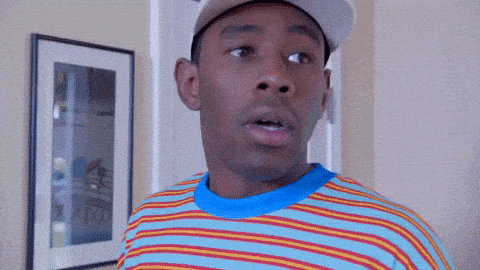Was this email forwarded to you? Subscribe here.
In This Edition of Remarkable Monday
CAUTION: This is a long one today. But this topic is so important that we can’t cut corners.
Have you ever avoided something that could help you grow, convincing yourself it was the "smart" or "safe" choice? Fear is tricky like that. It disguises itself as logic, convincing us to stay where it's comfortable—even when it's holding us back.
The Subtle Power of Fear
Fear doesn't always announce itself with alarm bells. Sometimes it whispers rational-sounding advice: "Better safe than sorry," or "Now isn't the right time." And while caution can be wise, fear-based thinking can quietly rob us of progress, opportunity, and growth.
Fear-based thinking shows up in many ways:
Over-Caution: Avoiding challenges because of potential risks.
Procrastination: Delaying action out of fear of failure.
Self-Doubt: Questioning your ability and staying stuck.
The problem? Fear doesn't just keep us safe. It can keep us small.

What Science Says About Fear-Based Thinking
Fear is both emotional and biological. Neuroscience shows us that the amygdala, a part of our brain designed to detect threats, can trigger what psychologist Daniel Goleman called an "amygdala hijack." This happens when our emotional response overrides logical thinking, prompting us to react impulsively—or avoid action altogether—even when there is no real danger.
For example, the fear of public speaking activates the same fight-or-flight response as facing a physical threat. This means that even non-life-threatening fears can feel as urgent and real as immediate danger. It explains why the fear of embarrassment can feel as intense as fear of injury.
Another scientific insight comes from Protection Motivation Theory (PMT). Psychologist R.W. Rogers found that when we encounter a potential threat, we ask two questions:
How bad is the threat?
Can I handle it?
The problem? We often exaggerate the risk and underestimate our ability to handle it. This can keep us stuck in avoidance mode, opting for safety over progress.

Fear in Action: A Biblical Perspective
The Bible offers timeless lessons about fear. Take the story of Gideon in Judges 6-7. Israel had been under siege for years. When an angel of the Lord called him "mighty warrior," Gideon's first response was doubt. "But my clan is the weakest, and I am the least in my family," he said. Translation? "I'm not enough. I'll fail."
Even after God promised, "I will be with you," Gideon hesitated, asking for multiple signs before he acted. And yet, when he finally faced his fear, Gideon led Israel to a miraculous victory. His courage wasn’t the absence of fear—it was the choice to move forward despite it.
How to Recognize Fear-Based Thinking
Fear can be subtle. It can feel logical, even responsible. But it’s important to pause and ask:
What’s my motive? Am I avoiding this because it's unsafe, or just uncomfortable?
What’s the cost of avoidance? What progress am I missing by playing it safe?
What story am I telling myself? Is it based on facts, or is fear writing the script?
What small step can I take? Fear loses power when we take action—even small ones.
Fear in Leadership and Innovation
History is full of moments where fear held societies back. The Luddites of 19th-century England resisted industrialization, fearing it would erase their way of life. Similarly, companies that fear innovation often get left behind. Kodak, for example, hesitated to embrace digital photography—and lost market dominance.
In contrast, leaders who faced fear head-on shaped history. Franklin D. Roosevelt, during the Great Depression, reminded Americans that "the only thing we have to fear is fear itself." His leadership turned collective paralysis into collective action.

Why Overcoming Fear Matters
Fear convinces us that playing it safe is smart. But most of the time, it's what keeps us from growth. As Seneca wrote centuries ago, "We suffer more often in imagination than in reality."
You don’t need to wait for fear to disappear. Courage isn’t about being fearless; it’s about moving forward even when you're afraid. Just like Gideon. Just like leaders, creators, and change-makers who dared to act despite fear.
Your Move
So where is fear keeping you small? What decision have you been putting off? What opportunity are you avoiding because it feels uncomfortable?
You don’t need to leap. But you do need to step.
Freedom doesn’t require being fearless. You just need to be faithful.
And it starts with moving—right now.
In Case You Missed It
The Hollywood hit fiilmmaker shares an inspiring message about success, perseverance, and trusting your journey–even when you are uncertain.
The ‘Yes’ That Built an Empire: How Tyler Denk Went from Rock Bottom to Beehiiv CEO
How this tech entrepreneur went from living in his parents' basement with just 33 cents in his bank account—to becoming the CEO of a groundbreaking email service provider.
If you are reading this far…
I hope this message finds you well. I’m sharing from my heart in hopes that you will be inspired to unearth and live out your God-given purpose. Hopefully, something I said resonated. I would love to hear from you if so. Please feel free to reach out to me on social media. FYI: I’m mostly active on Instagram these days. If you were forwarded this message, you can subscribe here to receive thoughts like this directly in your inbox. And don’t forget to check out the latest episode of my podcast, ConvoRoom with Mark Allen Patterson.
See you next week,



